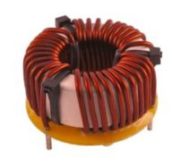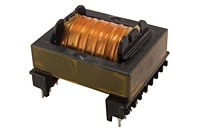LLC is one of many switch mode topologies for power supply and battery charging. The LLC transformer is critical in determining an LLC resonant converter’s efficiency. Resonant tanks are circuits comprised of inductors (L) and capacitors (C) that oscillate at a fixed frequency known as the resonant frequency. LLC transformers have two inductors and one…

Choke vs. Inductor: What’s the Difference?
Click to Expand Choke vs. Inductor: What’s the Difference? At MPS Industries, we specialize in manufacturing high-quality magnetic parts for automotive, medical, power distribution, and more. We’re ISO 9001:2015 certified, and we prioritize quality engineering practices to create products our clients can trust in critical applications, including inductors and chokes. Both chokes and inductors can…
